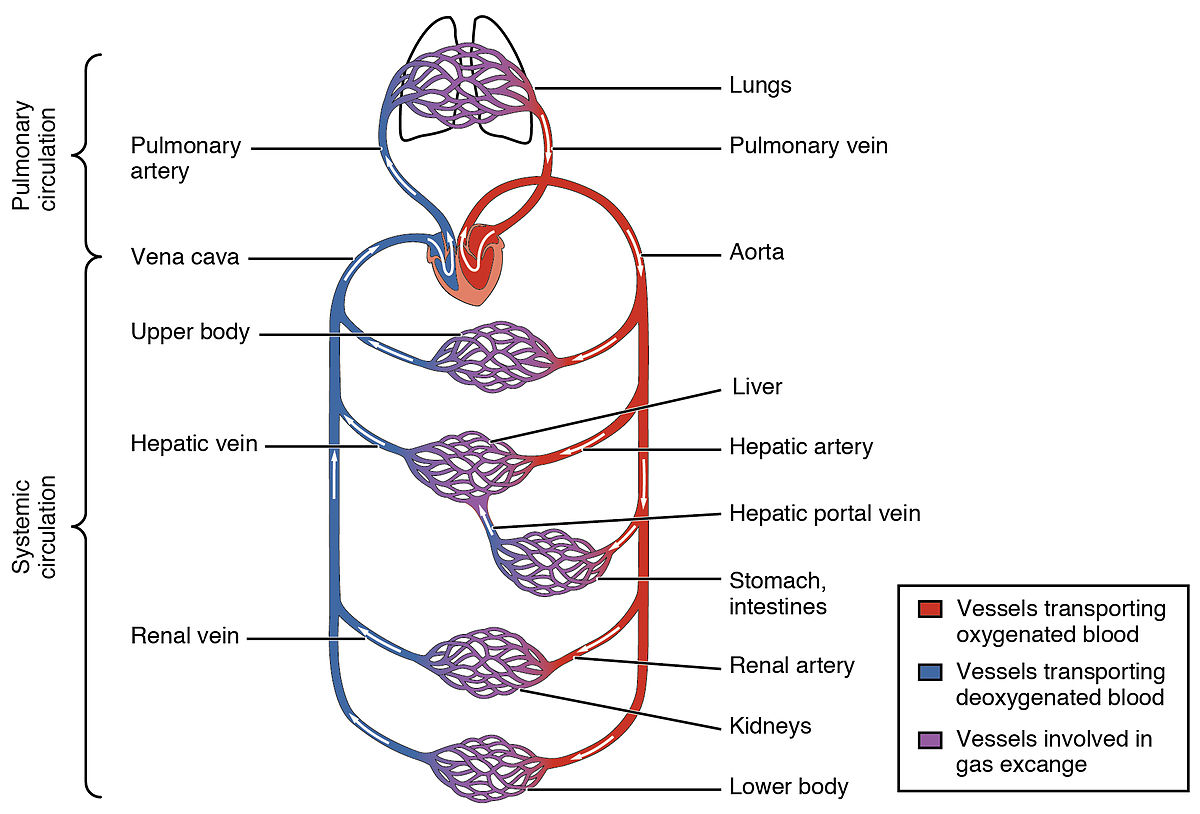
Name the three kinds of blood vessels found in human beings. With the help of suitable diagrams, differentiate between them.
Answer
482.1k+ views
Hint: Blood vessels are cylindrical tube-like structures that are present in almost all the parts of the body. They are responsible for the transportation of blood from one part to another. Each type of blood vessel functions differently, i.e. each type of vessel carries blood to and from different tissues and organs.
Complete answer:
There are three types of blood vessels in human beings:
- Arteries
- Veins
- Capillaries
The blood vessels form a complex network in the body through which the oxygenated blood gets transported from the heart to other parts of the body and the deoxygenated blood gets transported from other organs to the heart.
Arteries
Arteries are the blood vessels that transport the blood away from the heart to other organs and tissues in the body. Aorta is the main artery that is connected to the heart. The aorta branches into major arteries. The major arteries carry the blood to the organs and limbs. This then branches to form minor arteries, which further branch and form arterioles. Arterioles help in carrying the blood to deeper parts of tissues or muscles.
Capillaries
The arterioles connect to capillary beds, structures that contain numerous capillaries. Capillaries are extremely narrow vessels that aid in the exchange of gas, nutrients, etc.
Capillaries also act as connectors for arteries and veins.
Veins
Many capillaries converge to form venules. Venules connect to minor veins, which further connect to major veins. The veins carry deoxygenated blood back to the heart.

The above diagram depicts the circulation of blood throughout our bodies. The red vessels indicate the arteries, the blue vessels indicate the veins, and the purple mesh-like structures indicate the capillary networks.
Note: Since arteries carry blood from the heart, they are thick, muscular, and rigid. The thick walls help them to counter the high pressure of the blood.
On the other hand, veins are not thick or rigid. This is because the blood flows at low pressure in the veins.
Capillaries are extremely fragile and only carry a file of red blood cells at a time.
Complete answer:
There are three types of blood vessels in human beings:
- Arteries
- Veins
- Capillaries
The blood vessels form a complex network in the body through which the oxygenated blood gets transported from the heart to other parts of the body and the deoxygenated blood gets transported from other organs to the heart.
Arteries
Arteries are the blood vessels that transport the blood away from the heart to other organs and tissues in the body. Aorta is the main artery that is connected to the heart. The aorta branches into major arteries. The major arteries carry the blood to the organs and limbs. This then branches to form minor arteries, which further branch and form arterioles. Arterioles help in carrying the blood to deeper parts of tissues or muscles.
Capillaries
The arterioles connect to capillary beds, structures that contain numerous capillaries. Capillaries are extremely narrow vessels that aid in the exchange of gas, nutrients, etc.
Capillaries also act as connectors for arteries and veins.
Veins
Many capillaries converge to form venules. Venules connect to minor veins, which further connect to major veins. The veins carry deoxygenated blood back to the heart.

The above diagram depicts the circulation of blood throughout our bodies. The red vessels indicate the arteries, the blue vessels indicate the veins, and the purple mesh-like structures indicate the capillary networks.
Note: Since arteries carry blood from the heart, they are thick, muscular, and rigid. The thick walls help them to counter the high pressure of the blood.
On the other hand, veins are not thick or rigid. This is because the blood flows at low pressure in the veins.
Capillaries are extremely fragile and only carry a file of red blood cells at a time.
Latest Vedantu courses for you
Grade 10 | CBSE | SCHOOL | English
Vedantu 10 CBSE Pro Course - (2025-26)
School Full course for CBSE students
₹37,300 per year
Recently Updated Pages
Master Class 10 Science: Engaging Questions & Answers for Success

Master Class 10 Social Science: Engaging Questions & Answers for Success

Master Class 10 Maths: Engaging Questions & Answers for Success

Master Class 10 English: Engaging Questions & Answers for Success

Class 10 Question and Answer - Your Ultimate Solutions Guide

Master Class 9 General Knowledge: Engaging Questions & Answers for Success

Trending doubts
State and prove Bernoullis theorem class 11 physics CBSE

1 ton equals to A 100 kg B 1000 kg C 10 kg D 10000 class 11 physics CBSE

State the laws of reflection of light

One Metric ton is equal to kg A 10000 B 1000 C 100 class 11 physics CBSE

Difference Between Prokaryotic Cells and Eukaryotic Cells

1 Quintal is equal to a 110 kg b 10 kg c 100kg d 1000 class 11 physics CBSE




